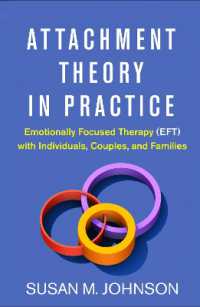Full Description
Why a book on gender issues in mathematics in the 21st century? Several factors have influenced the undertaking of this project by the editors. First, an international volume focusing on gender and mathematics has not appeared since publication of papers emerging from the 1996 International Congress on Mathematical Education (Keitel, 1998). Surely it was time for an updated look at this critical area of mathematics education. Second, we have had lively discussion and working groups on gender issues at conferences of the International Group for the Psychology of Mathematics Education [PME] for the past four years, sessions at which stimulating and ground-breaking research has been discussed by participants from many different countries. Some publication seemed essential to share this new knowledge emerging from a wider variety of countries and from different cultural perspectives. Third, some western countries such as Australia and the USA have experienced in recent years a focus on the "boy problem," with an underlying assumption that issues of females and mathematics have been solved and are no longer worthy of interest. Thus it seemed timely to look more closely at the issue of gender and mathematics internationally. When the idea for this volume first emerged, invitations were issued to those regularly attending the working and discussion groups at PME. Potential authors were charged to focus on gender issues in mathematics and were given wide scope to hone in on the issues that were central to their own research efforts, or were in receipt or in need of close attention in their own national or regional contexts.
Contents
International Perspectives on Gender and Mathematics Education: An Overview; Joanne Rossi Becker, Helen Forgasz, Olof Bjorg Steinthorsdottir, and Kyeong-Hwa Lee.
Section I. History, Policy, And Non-school Factors.
Chapter 2. The Ladies' Diary or Woman's Almanack, 1704-1841; Teri Perl.
Chapter 3. Conversations of Parents and Children Working on Mathematics; Melfried Olson, Judith Olson, Claire Okazaki, and Thuy La.
Chapter 4. Out-of-School-Time (OST) Programs as Mathematics Support for Females; Lynda R. Wiest.
Chapter 5. Freedom to Choose? Girls, Mathematics and the Gendered Construction of Mathematical Identity; Fiona Walls.
Chapter 6. Gender Mainstreaming: Maintaining Attention on Gender Equality; Colleen Vale.
Section II. National Focus.
Chapter 7. Studies in Mexico on Gender and Mathematics; Sonia Ursini, Martha P. Ramírez, Claudia Rodríguez, María Trigueros, and Ma. Dolores Lozano.
Chapter 8. Gender Differences When Working with Algebraic Variables: A Study with Mexican Secondary School Students; Carolina Rubi Real Ortega and Sonia Ursini.
Chapter 9. Factors Contributing to Gender Differences in Mathematics Performance of United States High School Students; Pamela L. Paek.
Chapter 10. Gender Differences in Mathematics Achievement: Evidence from Regional and International Student Assessments; Xin Ma.
Chapter 11. Mathematics Achievement in Icelandic Playschools: Examining When Gender Differences Emerge; Olof Bjorg Steinthorsdottir, Kimberly Dadisman, Dylan L. Robertson, and Kristjana Steinthorsdottir.
Chapter 12. Mathematics Teacher Education and Gender Effects; Sigrid Blömeke and Gabriele Kaiser.
Section III. High Achievers.
Chapter 13. Discovering the Potential of Gifted Females in Mathematics; Kyeong-Hwa Lee, Eun-Jung Lee, Seoung-Hey Paik, and HeiSook Lee.
Chapter 14. Gender and High Achievers in Mathematics: Who and What Counts?; Gilah C. Leder and Helen J. Forgasz.
Chapter 15. What Are High Achieving Young Women's Perceptions of Mathematics Over Time?; Amanda Lambertus, Susan Bracken, and Sarah Berenson.
Section IV. Tertiary Students.
Chapter 16. The Influence of High School and University Experiences on Women's Pursuit of Undergraduate Mathematics Degrees in Canada; Jennifer Hall.
Chapter 17. Try and Catch the Wind: Women Who Do Doctorates at a Mature Stage in Their Lives; Ansie Harding, Leigh Wood, and Michelle Muchatuta with Barbara Edwards, Lucia Falzon, Sibba Gudlaugsdottir, Belinda Huntley, Jillian Knowles, Barbara Miller-Reilly, and Tobia Steyn.
Chapter 18. Recognizing Gender in Mathematics Relationships: A Relational Counseling Approach Helps Teachers and Students Overcome Damaging Perceptions; Jillian M. Knowles.








